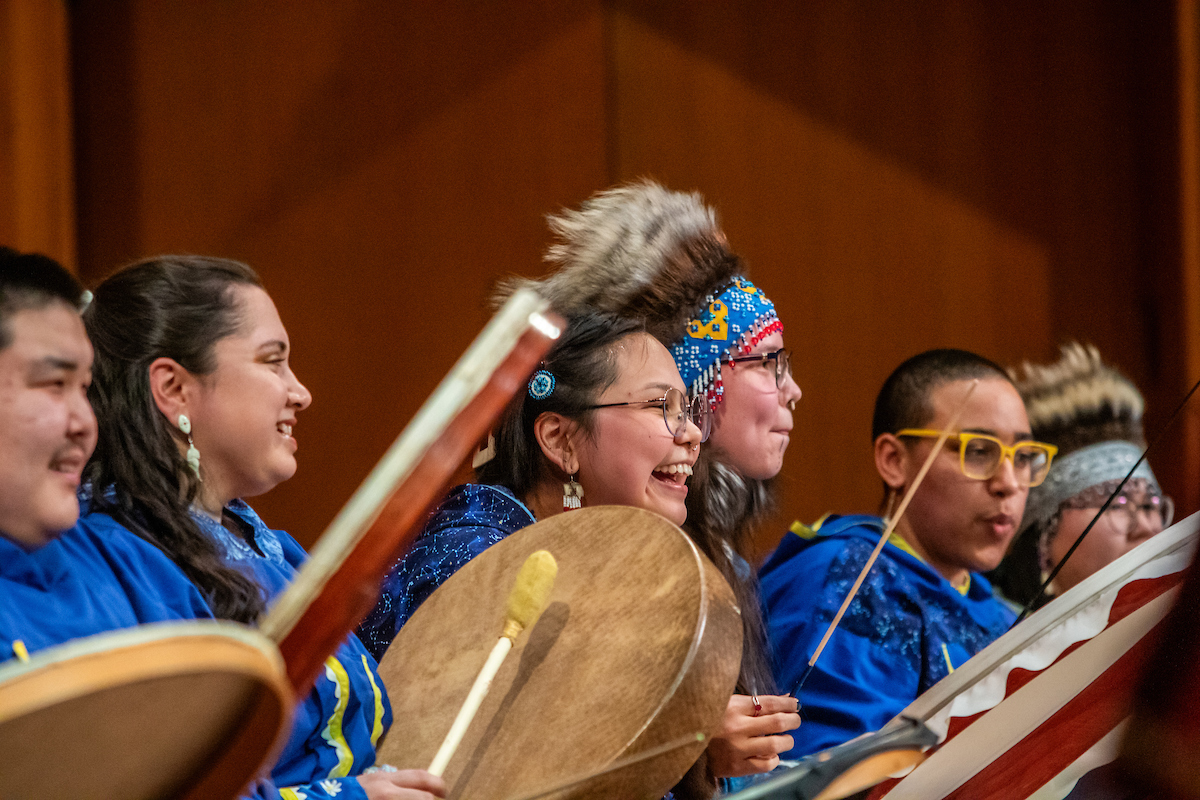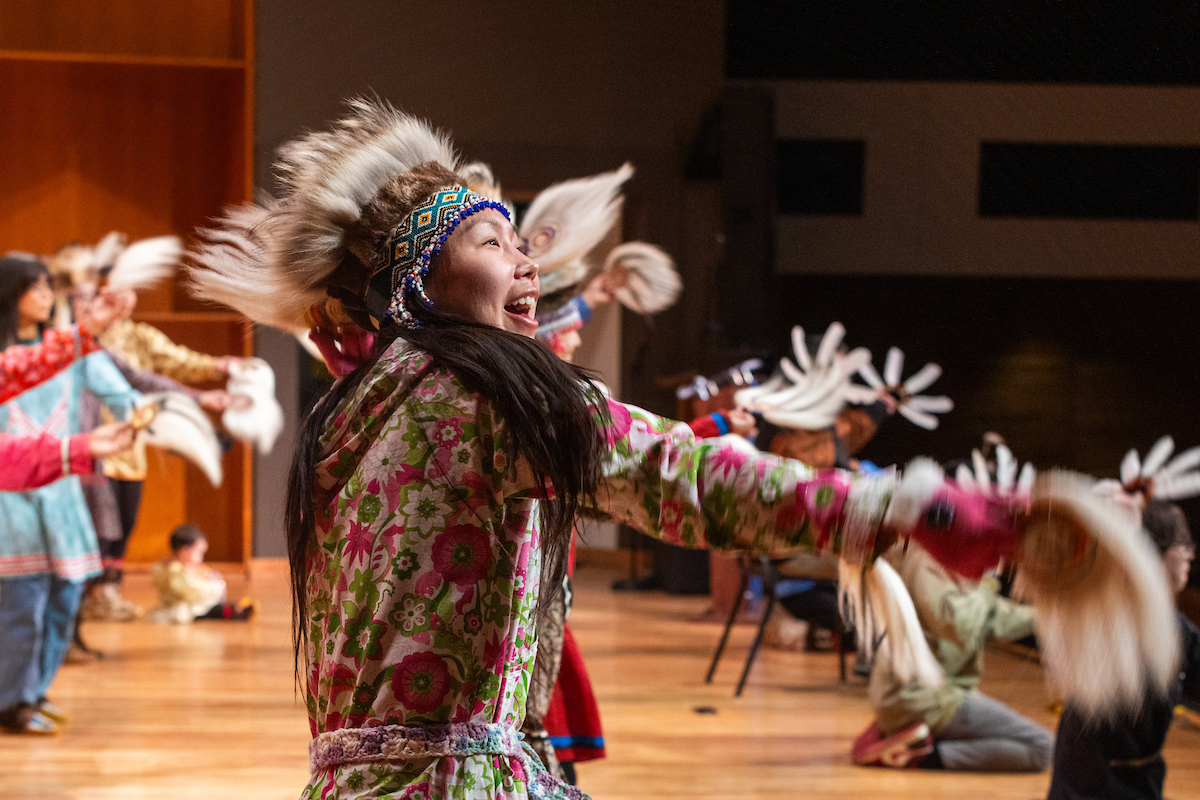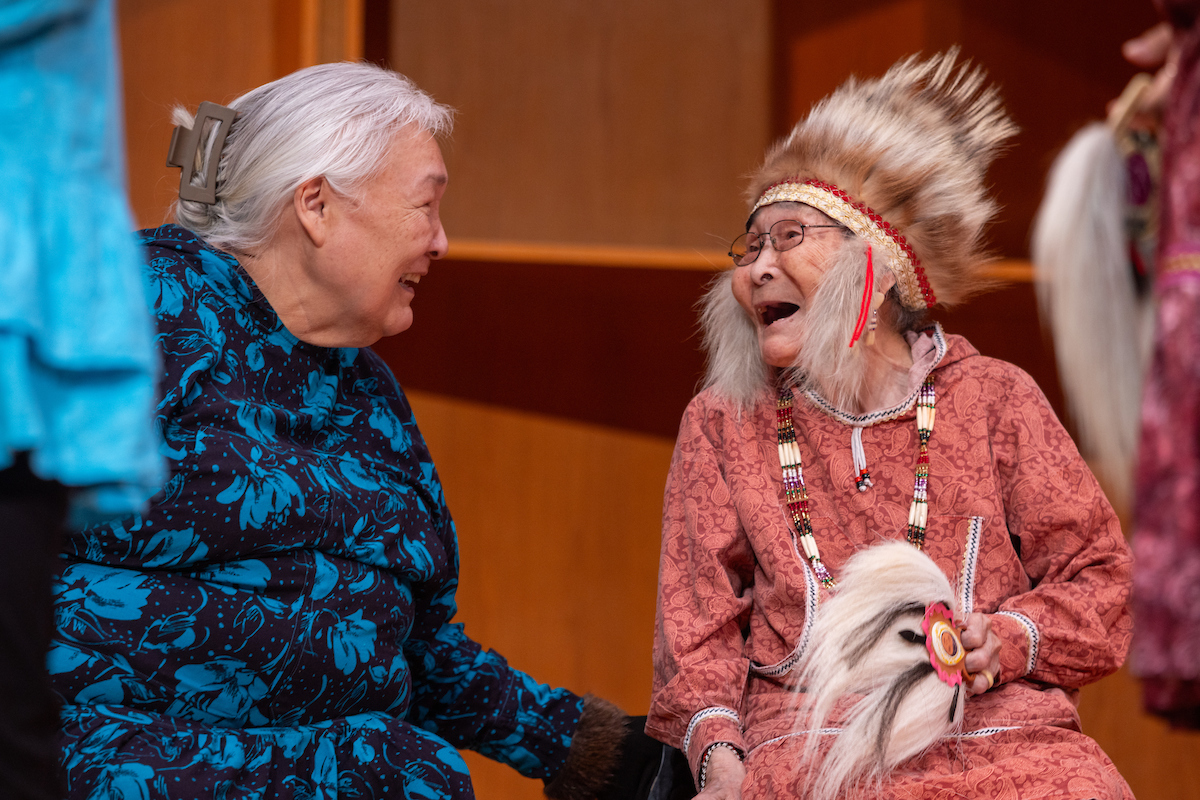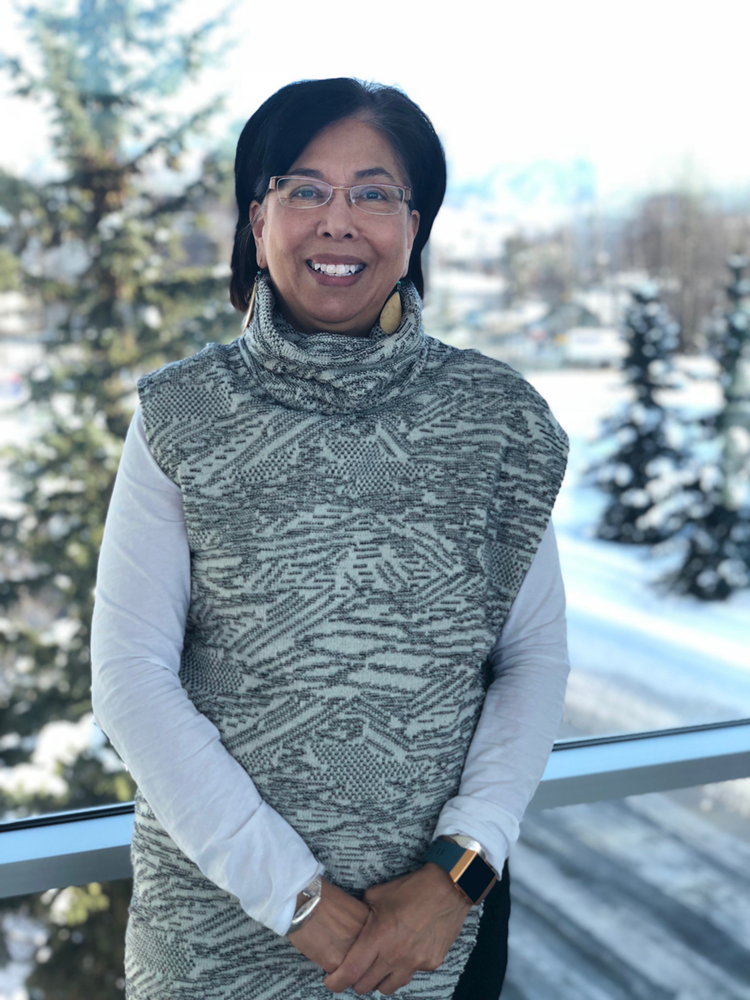Modern Alaska Native Dance Festivals
by Maria Shaa Tláa Williams
 Alaska Native people have celebrated music and dance for millennia. All ceremony was
accompanied by song and dance and was an expression of deep spirituality. Although
there are twenty-three different Alaska Native languages, and seven or eight broad
cultural groups, this was one of the shared characteristics in this varied cultural
landscape.
Alaska Native people have celebrated music and dance for millennia. All ceremony was
accompanied by song and dance and was an expression of deep spirituality. Although
there are twenty-three different Alaska Native languages, and seven or eight broad
cultural groups, this was one of the shared characteristics in this varied cultural
landscape.
With the arrival of Europeans, beginning with the Russians in the mid 1700’s colonial pressures that included genocide, introduction of unknown diseases, and Christian missionaries began to drastically re-shape the spiritual and cultural landscape. After the 1867 Treaty of Cession, in which the United States purchased the trade posts of the Russian American Company, a new colonial approach emerged. This included an organized plan in which various Christian denominations identified specific geographic areas of Alaska to bring in missionaries, under the Comity Agreement of 1874. (Williams, 2009). The arrival of the American Christian missionaries included eradication of shamanistic practices, along with masked dance practices, and ceremony. English-only policies were part of the process to re-make Alaska Natives, in addition to forcibly removing children to boarding schools across Alaska and the lower 48 states for years at a time. This is the number one reason that Alaska Native languages are all endangered.
In the 1960’s, after the Alaska Statehood Act, the newly formed State of Alaska and the Federal Government began making land selections, and no Alaska Native people or communities were part of those discussions and/or agreements. This led to the land claims movement or the Native Solidarity Movement (Williams, 2009). Various Alaska Native associations were formed, including the Association of Village Council Presidents, the Arctic Slope Native Association, the Northwest Native Association, Cook Inlet Native Association, the Tanana Chiefs Conference, etc. They worked together and established the Alaska Federation of Natives in 1966 and this became the main body that dealt with the United States Congress on a land settlement. This led to the 1971 Alaska Native Claims Settlement Act, which remains the largest land settlement in the history of the United States. ANCSA mandated establishing 12 regional corporations and almost 200 village corporations, and was a social engineering approach to institute a capitalistic model.
One of the outcomes of the 1960’s and the 1971 ANCSA was a renewed sense of identity among Alaska Native peoples. This marks a time when music, dance and language, along with traditional values began to be more publicly celebrated and highlighted. By the 1980’s a renaissance in traditional music and dance was in full swing. This led to the establishment of modern Alaska Native dance festivals.

Dates of Modern Alaska Native Dance Festivals
In addition to the modern dance festivals listed above, there were several historic gatherings in the 1980’s that inspired many communities to dance publicly again. These included the following:
In conclusion, in 2024 it’s hard to conceive of a time when traditional Alaska Native music and dance were repressed. We live in an era of a multitude of dance festivals and gatherings and an exponential growth in the numbers of Alaska Native dance groups. We are so blessed to be witnesses to re-birth and celebration.

Sources
Murphrey, Tim. “The Alaska Native Arts Festival”, in the Alaska Native Reader. Durham: Duke University Press, 2009.
Williams, Maria. “The Comity Agreement,” in the Alaska Native Reader, Durham: Duke University Press, 2009.
Williams, Maria. “The Native Solidarity Movement,” in the Alaska Native Reader. Durham: Duke University Press, 2009.
About the Author


